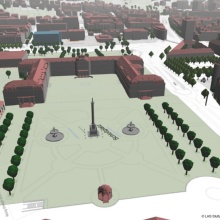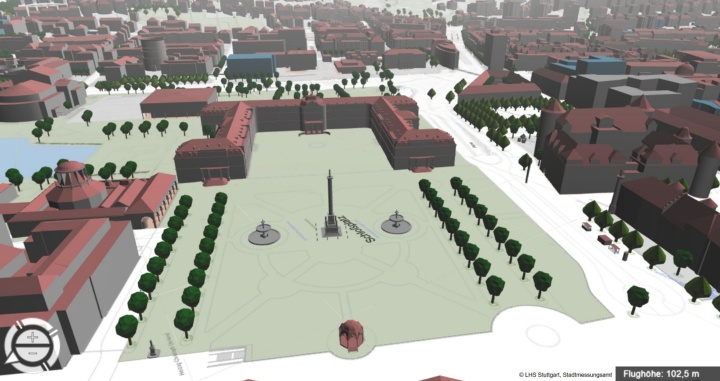When hearing the keyword turnaround in energy policy we mostly think of large wind farms in the north of Germany or in front of the coastline. The transport of energy generated in this way in the south of the Republic, however, requires complex high-voltage lines that are controversial among the public. The cooperative doctoral study course “Windy Cities” at the University of Stuttgart, University for Technology Stuttgart (HFT) and the University of Esslingen would like to use local small winds that exist in each city along the houses for energy generation.
Whoever has spent a hot summer evening in Stuttgart’s valley basin will know the phenomenon: when the sun goes down, a gentle wind suddenly flows over the valley edges into the city and brings a cooling effect. Something similar can also be observed at the break-off edge of house roofs.
“We want to use these thermals with the aid of small wind power plants for the decentralised power supply in urban areas”, explained the spokesperson of the course, Professor Bernd Plietker from the Institute of Organic Chemistry at the University of Stuttgart and Professor Volker Coors from the Centre of Geodesy and Geoinformatics at the HFT Stuttgart.
The energy yield from such small wind power plants is not insignificant, yet there are still numerous hurdles obstructing the economic efficiency. A particular problem is the fluctuating energy quantities, depending on wind strength and consumption that pose a challenge to the network stability and the storage technologies. In the course of the “Windy Cities” project the interaction between the conversion of wind into energy and the intelligent storage in the urban environment are therefore to be investigated.
Dynamic building and power supply simulation
On the one hand the scientists want to develop a dynamic building and power supply simulation on the basis of a 3D urban district model with which the power requirements can be precisely predicted in an urban district as well as the power generation in the next 24 hours. This simulation will be linked with an intelligent electricity metre (smart-metre-system) that records the current energy consumption. The load profile forecast in this way is used to optimise the charging and discharging resp. the operation of the storage media – batteries as well as heating pumps with hot water storage. The aim is to primarily cover the building’s own energy requirements and to minimise the supply of power peaks into the power supply.
Innovative chemical storage facility on hydrogen basis
The storage technologies used up to now in power generation, however, do not match the energy production of small wind farms since they are orientated towards large quantities of electricity. Therefore a further sub-project of Windy Cities is geared towards developing innovative chemical storage facilities. In so doing the prototype of a hydrogen battery created at the University of Stuttgart should be further developed into micro-reactors that can be interconnected parallel and in bulk and that are controllable individually. Hydrogen is a particularly attractive energy source in connection with the reconversion into electricity via hydrogen fuel cells because it achieves a high storage density, ideally illustrates the cycle from energy conversion, storage and provision and leaves behind a small CO2 footprint.
Twelve postgraduate students from the most diverse range of disciplines
Twelve postgraduate students from various disciplines such as chemistry, geodesy and the engineering sciences are working together at the University of Stuttgart, the University for Technology Stuttgart and the University of Esslingen to develop and realise this concept in the framework of the cooperative doctoral study course funded by the Ministry of Science and Art Baden-Württemberg.
Further information: http://windycities.de/de/
3D-models: https://3d.stuttgart.de
Expert Contact:
Professor Bernd Plietker, University of Stuttgart, Institute of Organic Chemistry, +49(0)711-65 53283, bernd.plietker@oc.uni-stuttgart.de
Professor Volker Coors, Dr. Anja Ernst, HFT Stuttgart, Volker-coors@hft-stuttgart.de, anja.ernst@hft-stuttgart.de



